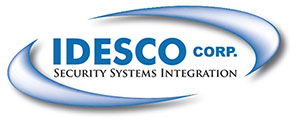Idesco Partners with Brivo Systems to Provide Cloud-based Security Solutions
Idesco Corp.,  a New York-based security systems integrator, announced its partnership with Brivo, a pioneer in cloud applications for security management, to bring cost-effective and secure cloud-based access control systems.
a New York-based security systems integrator, announced its partnership with Brivo, a pioneer in cloud applications for security management, to bring cost-effective and secure cloud-based access control systems.
Brivo's cloud-based solutions significantly simplify the process of managing a security system. Customers do not need to have any servers at their facilities. The card readers at the door are linked to a “plug and play” intelligent controller that communicates directly with Brivo’s highly secure data centers over a safe Internet connection - all from a browser, with no additional software to install.
Security managers can easily monitor all activities and control the entire system through a private control dashboard that can be accessed on their computer or mobile device.
With no up-front computer hardware purchases, and lower operating costs than traditional solutions, cloud-based access control systems are proven to lower the total cost of ownership for security management.
“Idesco has always been on the forefront of innovation as we are constantly looking for new ways of helping our customers keep their employees, visitors and assets safe and secure,” stated Andrew Schonzeit, Idesco’s president. “We are excited about this new partnership with Brivo as we believe that providing powerful cloud-based access control systems will offer tremendous value to our customers.”
“Brivo is proud to welcome Idesco as an Authorized Brivo Dealer,” said John Szczygiel, Brivo’s executive vice president & chief operating officer. “The longevity of Idesco and their reputation in the market speaks volumes about the company and the people behind it. Their focus on innovation and quality is a perfect fit with our objective of delivering world class cloud-based security solutions to our end users.”